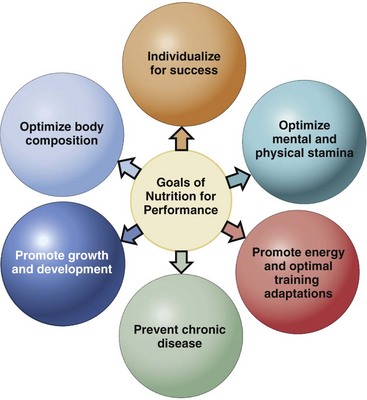Chapter 7 After completing this chapter, the student will be able to perform the following: 1 Explain general dieting recommendations. 2 Describe an antiinflammatory diet. 3 Describe the sport performance–related diet. 4 Explain why fluid intake is important. 5 List the components necessary for weight management. 6 Describe nutritional supplements. 7 List the risks and benefits for athletes of using nutritional supplements. 9 Explain the relationship between eating disorders and exercise or sport performance. 10 Define the three major eating disorders of athletes. 11 List the symptoms of eating disorders. 12 Report life-threatening substance abuse behavior and eating disorders to the appropriate professional. The massage therapist needs to understand the nutritional needs of the athletic client. Nutrients and/or the use of nutritional supplements and banned substances can influence massage outcomes and present contraindications. Proper nutrition is necessary for recovery, healing, and performance. Appropriate use of various nutritional supplements can support, but not replace, a nutritious diet (Figure 7-1). FIGURE 7-1 Goals of nutrition for performance. (Netter illustration from www.netterimages.com. © Elsevier Inc. All rights reserved.) Athletes who are trying to lower body fat levels must maintain a certain level for general health. The essential body fat level for men is at least 3%, with 5% body fat being optimal because of possible hydration problems. For women, the optimal body fat level is between 15% and 20% for athletes and about 15% for elite athletes. Some women athletes, particularly runners and gymnasts, try to get their body fat levels as low as a man’s. This can be dangerous. A woman needs a higher level of body fat to maintain normal menstrual function and reproductive capabilities. The standard weight status categories associated with body mass index (BMI) ranges for adults are shown in Table 7-1. TABLE 7-1 Body Mass Index (BMI) Ranges for Adults From Centers for Disease Control and Prevention. http://www.cdc.gov/healthyweight/assessing/bmi/adultbmi/index.html
Nutritional Support and Banned Substances

Sport Performance–related Diet
Weight Control
BMI
Weight Status
Below 18.5
Underweight
18.5 to 24.9
Normal
25.0 to 29.9
Overweight
30.0 and above
Obese
![]()
Stay updated, free articles. Join our Telegram channel

Full access? Get Clinical Tree


Nutritional Support and Banned Substances
Only gold members can continue reading. Log In or Register to continue
 hours between eating and an upcoming competition because competition anticipation slows down digestion, and an upset stomach may occur.
hours between eating and an upcoming competition because competition anticipation slows down digestion, and an upset stomach may occur.
